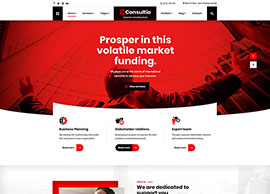Oh, my hemp-loving friends! Today, we’re gonna dive into the fascinating world of cannabis packaging design. With the ever-growing cannabis industry, it’s crucial to make your products stand out on the shelves. So, buckle up as we take you on a whirlwind journey through the ins and outs of creating irresistible packaging for your cannabis goods. And, of course, we’ve got some amazing resources for you, like Smarter Revolution’s cannabis packaging design, cannabis consulting, CBD co-packing, and copywriting services. Ready? Let’s go!
Table of Contents
- Why Does Cannabis Packaging Matter?
- Key Elements of Stellar Cannabis Packaging
- How to Get Started with Your Cannabis Packaging Design
- Design Tips for a Winning Cannabis Packaging
- Seven Frequently Asked Questions about Cannabis Packaging Design
1. Why Does Cannabis Packaging Matter?
Let’s be real, appearances matter. As Maya Angelou said, “People will forget what you said, people will forget what you did, but people will never forget how you made them feel.” And, folks, that’s the power of fantastic packaging! It’s your first chance to create a lasting impression on potential customers.
But it’s not just about looks. Your cannabis packaging must also comply with various regulations and safety standards. And did you know that 30% of solid waste in the U.S. comes from packaging materials? Yikes! So, let’s be eco-friendly too!
2. Key Elements of Stellar Cannabis Packaging
To create the ultimate cannabis packaging, consider these essential elements:
2.1. Brand Identity
Your packaging should reflect your brand’s personality and values. Is your brand fun and quirky, or sophisticated and luxurious? Knowing your identity will help guide your design decisions.
2.2. Compliance
Every region has its own regulations for cannabis packaging, so make sure you’re in the know. You’ll need to include essential information such as product type, potency, warnings, and child-resistant features.
2.3. Sustainability
Eco-friendly packaging is not only better for the environment, but it also resonates with consumers. Consider using recycled materials, minimal packaging, or even plant-based inks.
<a name=”how-to-get-started-with-your-cannabis-packaging-design”></a>
3. How to Get Started with Your Cannabis Packaging Design
Feeling a bit overwhelmed? No worries! Just follow these simple steps to kick off your cannabis packaging design journey:
- Know your target audience: Understand who you’re designing for, and cater to their preferences and needs.
- Define your unique selling proposition: What sets your product apart? Make sure your packaging communicates that.
- Research the competition: Check out what your competitors are doing and identify opportunities to stand out.
- Hire a professional designer: If design isn’t your forte, enlist the help of a skilled designer who understands the cannabis industry.
- Test and refine: Gather feedback on your designs and make improvements as needed. Iterate until you’ve got a winning design!
4. Design Tips for a Winning Cannabis Packaging
Alrighty, now that we’ve covered the basics, let’s dive into some juicy design tips to help you create an eye-catching cannabis packaging:
4.1. Use Bold Colors and Graphics
Make your product pop with vibrant colors and eye-catching graphics. But remember, your design should reflect your brand’s identity, so choose colors that suit your brand personality.
4.2. Keep It Simple
Sometimes, less is more. A clean, minimal design can help your product stand out on crowded shelves. Focus on a few key elements and avoid clutter.
4.3. Incorporate Tactile Elements
Who doesn’t love a bit of texture? Add embossing, debossing, or textured finishes to make your packaging a delight to touch.
4.4. Be Mindful of Typography
Choose fonts that are easy to read and complement your design. Be sure to include all necessary information without overcrowding the package.
4.5. Opt for Sustainable Materials
Show the world you care about our planet by using eco-friendly materials like recycled paper, biodegradable plastic, or compostable materials.
Seven Frequently Asked Questions about Cannabis Packaging Design
Finally, let’s wrap up with some FAQ action! Here are seven common questions people have about cannabis packaging design.





































